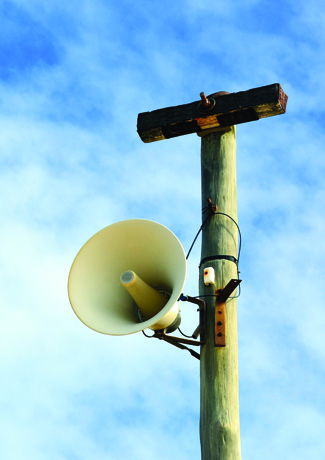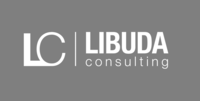
Whistleblower protection as a contribution to corporate success
Whistleblower protection - Close listening recommended
Dirk Libuda: Lawyer, founder and owner of DILICOman
Published in: DiALOG - THE MAGAZINE FOR THE DIGITAL CHANGE | 2021
Development of a popular whistleblower portal
An EU directive requires companies to introduce a system for receiving reports of breaches. Many SMEs have already recognised that a whistleblowing system actually helps to increase the company's success. Now entrepreneurs, managing directors and managers are faced with the challenge of establishing a whistleblowing solution in their company that both their own employees and external business partners are happy to use at any time and in any place. But what do they need to pay attention to in order to successfully implement a whistleblowing portal?
Components of an effective and accepted whistleblowing system
It sounds so simple. Just make the appropriate reporting channels available and assign a suitable person to process the incoming reports. SMEs already fulfil the requirements of the EU Whistleblower Directive. But is that really all there is to it? Define a reporting channel and off you go? No, more needs to be done to ensure that the whistleblowing system can contribute to business success.

There are two main components to setting up a good whistleblowing solution. Firstly, companies need a whistleblower portal. Secondly, even the best solution is of little use if the users do not recognise and trust it. Without comprehensive, recurring and targeted communication, the whistleblowing solution will be used little or not at all. SMEs must primarily reach the company's employees with clear messages and easily accessible information. In addition, external parties, i.e. suppliers, customers and other service providers, must also be addressed.
Obligation from the EU Whistleblower Directive
For many companies, the first step is to realise that the EU Whistleblower Directive requires them to give whistleblowers the opportunity to report breaches confidentially. This requirement was already adopted in 2019 and must be implemented in 2021 in all EU member states that do not yet have regulations to protect whistleblowers. All companies with more than 50 employees are covered.
Many SMEs have already recognised that a whistleblowing system actually helps to increase the company's success.
Contribution to corporate success
By introducing a good whistleblowing solution, SMEs are certainly contributing to their company's success beyond simple legal obligations. The call to report misbehaviour and thus possible errors in operational processes is viewed positively as an incentive to continuously improve the company's work. Mistakes become opportunities. This creates an open error and learning culture. It is also important to identify deliberate offences by individuals that damage the company and to punish them appropriately. However, it is at least as important to recognise which weaknesses have occurred in systems and where gaps have become apparent. /p>
With a professional whistleblower system, employers position themselves as good employers. Through suitable preventative measures - such as the simple option to report violations - they ensure the protection of all employees and, ultimately, the company. This also creates a positive public image, provided that the whistleblowing system is prominently displayed on the homepage, for example, so that external persons such as suppliers can access it. In the supply chain, SMEs thus present themselves as business partners who care about clarifying misconduct and optimising deficient systems.
Of course, this is not the primary motivation for a whistleblower system. Nevertheless, a whistleblower system as part of compliance has a deterrent effect for potential perpetrators If the whistleblower portal is clearly recognisable to outsiders, such as the video surveillance system on the premises with high-value goods, then this ensures a high inhibition threshold, especially in the event of possible "attacks from outside".
What must a whistleblowing solution be able to do?
What a good whistleblowing solution must be able to do is already defined in the EU Whistleblower Directive. In addition, the experience of large and international companies that have been using such systems for some time has provided some best-practice approaches.
In general, SMEs should not only focus on formal but also practical considerations when designing their whistleblowing portal. And, of course, costs and benefits play a role - both the costs of technical tools and personnel costs. The solution should initially be a possible reporting channel for whistleblowers. The system should also make it possible to process the reports and document the processes. It should be possible to contact the whistleblower directly from the system. And it should be easy to administer the respective processors in the portal. Ideally, external lawyers can be connected to the system, either as a trusted lawyer who is part of the whistleblowing system or as an external consultant who takes over the processing of cases for SMEs.
Whistleblower portal: digital vs. analogue
Does an SME have to purchase and install complex technical software or is a complaints letterbox not enough?
Notifications can be submitted in various forms: By letter, fax and e-mail. A call to a hotline. A personal visit to the confidential contact person. A broad mix of possibilities. The disadvantages of "analogue" solutions quickly become apparent when looking at the subsequent steps once the whistleblower's report has been received and further processing of the case is pending. Letters, printed emails and faxes as well as handwritten transcripts of conversations can be stored safely in a file folder in a fireproof cabinet, but this is not the current state of science and technology in the age of New Work and home office.
It is advisable not to offer too many reporting channels. This confuses more than it provides clarity.
It is advisable not to offer too many reporting channels. This confuses more than it provides clarity. The effort involved in transmitting the information to the defined processor:in the notifications and the risk of ensuring the confidentiality of forwarded letters and emails within the company are high.
SMEs are increasingly relying on a few, selected and well thought-out reporting channels, e.g. a digital whistleblower portal as a cloud solution and, in addition, an external lawyer as a personally contactable ombudsperson. It is neither possible to prevent nor prohibit a whistleblower from sending a report by post. In this case, SMEs must ensure through clear internal processes that the letter is sent directly from the mailroom to the right place. Nevertheless, even this now statistically rare case of whistleblowing by letter is better solved if the document is scanned and transferred to the digital file of the whistleblowing system.
For high acceptance: Intensive communication about the whistleblowing system
Whistleblowing systems are only used willingly if whistleblowers know and trust them. Without good marketing of the whistleblowing portal, the benefits of the solution will be significantly lower. In the right place, e.g. on the internal collaboration platform, in the code of conduct or in anti-corruption training, a few explanations will achieve their purpose.
Communication campaign on the whistleblowing system
SMEs can and should use various channels for communication. The intranet and homepage are particularly suitable as communication channels, as this is where the information on the whistleblower system can be found permanently. It should be easy for users to access the whistleblower portal with just a few actions (no more than 2 "clicks"). It is also helpful to store certain keywords such as "compliance", "tips" and "violations" in the search function.
Addressing positive aspects and negative associations with whistleblowing
Not everyone associates only positive things with whistleblowing. The fear of whistleblowers who want to make another person look bad for no reason is high. Unfortunately, there is still a widespread view that the bearer of bad news is (almost) as bad as the perpetrator. SMEs should actively counter these negative associations.
In order to prevent misuse or even abuse of the whistleblower portal, companies can address this in their communication about the whistleblower system. What does not belong in the whistleblowing system because there are already other channels for this, e.g. customer complaints to the customer hotline or allegations of discrimination to the anti-discrimination officer already appointed for this purpose? It is more difficult to convey the message that only bona fide whistleblowers are protected. This can be subtly implied by companies asking whistleblowers for information based solely on facts, evidence and testimonials.
Practical functions of the whistleblowing portal and appealing communication are the levers for success SMEs are on the right track in implementing the EU Whistleblower Directive if they a) select a suitable whistleblowing portal, b) plan good communication on whistleblowing, c) integrate the whistleblowing solution into their operational processes and d) actively operate the whistleblowing system on a permanent basis.
http://www.certnex.de
